Related Research Articles

Bragi is the skaldic god of poetry in Norse mythology.

In Norse mythology, Ragnarök is a foretold series of impending events, including a great battle in which numerous great Norse mythological figures will perish ; it will entail a catastrophic series of natural disasters, including the burning of the world, and culminate in the submersion of the world underwater. After these events, the world will rise again, cleansed and fertile, the surviving and returning gods will meet, and the world will be repopulated by two human survivors, Líf and Lífþrasir. Ragnarök is an important event in Norse mythology and has been the subject of scholarly discourse and theory in the history of Germanic studies.

In Norse mythology, Valhalla is described as a majestic hall located in Asgard and presided over by the god Odin. There were five possible realms the soul could travel to after death. First was, Fólkvangr which was ruled by the goddess Freyja. Second, was Hel, ruled by Hel, Loki's daughter. The third realm was that of the goddess Rán. The fourth realm was the Burial Mound where the dead could live, and the last realm was Valhalla, ruled by Odin and was called the Hall of Heroes. The masses of those killed in combat, along with various legendary Germanic heroes and kings, live in Valhalla until Ragnarök, when they will march out of its many doors to fight in aid of Odin against the jötnar. This eternal battle and life in Valhalla was a reflection of greater Viking ideals, for "what finer way to exist other than fighting, killing, and feasting with your erstwhile enemies, united in the common enterprise of training for the final battle”. Valhalla was idealized in Viking culture and gave the Scandinavians a wide spread cultural belief that there is nothing more glorious than death in battle. The belief in a Viking paradise and eternal life in Valhalla with Odin gave the Vikings a violent edge over the other raiders of their time period.

Ragnar Lodbrok, according to legends, was a Viking hero and a Swedish and Danish king.
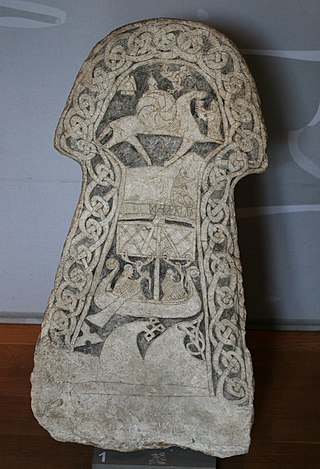
In Norse mythology, a valkyrie is one of a host of female figures who guide souls of the dead to the god Odin's hall Valhalla. There, the deceased warriors become einherjar. When the einherjar are not preparing for the cataclysmic events of Ragnarök, the valkyries bear them mead. Valkyries also appear as lovers of heroes and other mortals, where they are sometimes described as the daughters of royalty, sometimes accompanied by ravens and sometimes connected to swans or horses.

Sigrún is a valkyrie in Norse mythology. Her story is related in Helgakviða Hundingsbana I and Helgakviða Hundingsbana II, in the Poetic Edda. The original editor annotated that she was Sváfa reborn.

Brunhild, also known as Brunhilda or Brynhild, is a female character from Germanic heroic legend. She may have her origins in the Visigothic princess and queen Brunhilda of Austrasia.

In the Old Norse written corpus, berserkers were those who were said to have fought in a trance-like fury, a characteristic which later gave rise to the modern English adjective berserk'furiously violent or out of control'. Berserkers are attested to in numerous Old Norse sources.

Hrólfr Kraki, Hroðulf, Rolfo, Roluo, Rolf Krage was a semi-legendary Danish king who appears in both Anglo-Saxon and Scandinavian tradition.
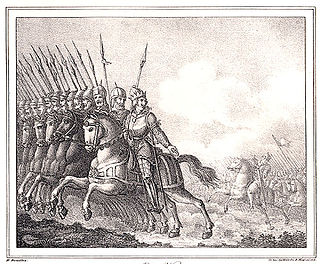
Eadgils, Adils, Aðils, Adillus, Aðísl at Uppsölum, Athisl, Athislus or Adhel was a semi-legendary king of Sweden, who is estimated to have lived during the 6th century.

A shield-maiden was a female warrior from Scandinavian folklore and mythology.
The Norse mythology, preserved ancient Icelandic texts such as the Poetic Edda, the Prose Edda, and other lays and sagas, was little known outside Scandinavia until the 19th century. With the widespread publication of Norse myths and legends at this time, references to the Norse gods and heroes spread into European literary culture, especially in Scandinavia, Germany, and Britain. In the later 20th century, references to Norse mythology became common in science fiction and fantasy literature, role-playing games, and eventually other cultural products such as Japanese animation. Storytelling was an important aspect of Norse mythology and centuries later, with the rediscovery of the myth, Norse mythology once again relies on the impacts of storytelling to spread its agenda.
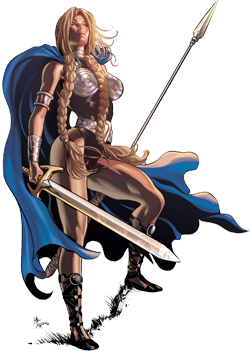
Valkyrie is a superheroine appearing in American comic books published by Marvel Comics. Created by Steve Englehart and Sal Buscema, the character first appeared in Defenders #4. She is based on the Norse mythological figure Brynhildr. Valkyrie became a mainstay of the superhero team known as the Defenders and a close ally and one-time love interest of the god Thor.
In Norse mythology, Sindri is the name of both a dwarf and a hall that will serve as a dwelling place for the souls of the virtuous after the events of Ragnarök. Sindri is also referred to as Eitri, the brother of Brokkr.
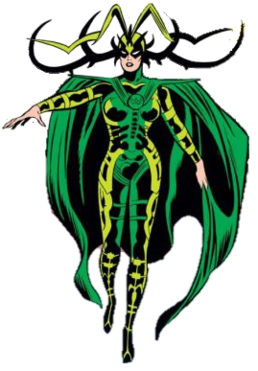
Hela is a fictional character appearing in American comic books published by Marvel Comics. She is based on the goddess Hel from Norse mythology, and was first adapted by Stan Lee and Jack Kirby in Journey into Mystery #102. Hela is the Asgardian Goddess of Death who serves as the ruler of Hel and Niflheim. The character is usually depicted as an adversary of the superhero Thor.
Hrólfs saga kraka, the Saga of King Rolf Kraki, is a late legendary saga on the adventures Hrólfr Kraki, a semi-legendary king in what is now Denmark, and his clan, the Skjöldungs. The events can be dated to the late 5th century and the 6th century. A precursor text may have dated to the 13th century, but the saga in the form that survived to this day dates to c. 1400. Forty-four manuscripts survive, but the oldest one of them is from the 17th century, although a manuscript is known to have existed c. 1461 at the monastery of Möðruvellir in Iceland.
![<i>Beauty and the Beast</i> (2005 film) 2005 [[Cinema of South Africa|South Africa]] film](https://upload.wikimedia.org/wikipedia/en/3/3c/Bloodbeasts.jpg)
Beauty and the Beast is a 2005 British-South African film which is based on the folktale "Beauty and the Beast" and is set during the time of the Vikings.
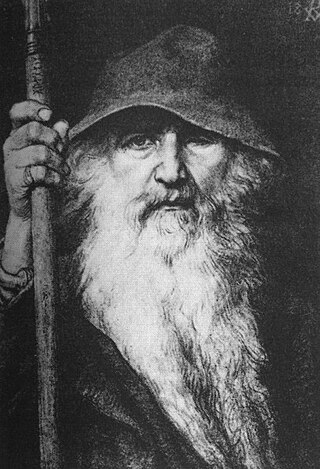
Odin is a widely revered god in Germanic paganism. Norse mythology, the source of most surviving information about him, associates him with wisdom, healing, death, royalty, the gallows, knowledge, war, battle, victory, sorcery, poetry, frenzy, and the runic alphabet, and depicts him as the husband of the goddess Frigg. In wider Germanic mythology and paganism, the god was also known in Old English as Wōden, in Old Saxon as Uuôden, in Old Dutch as Wuodan, in Old Frisian as Wêda, and in Old High German as Wuotan, all ultimately stemming from the Proto-Germanic theonym *Wōðanaz, meaning 'lord of frenzy', or 'leader of the possessed'.

The Legend of Sigurd and Gudrún is a book containing two narrative poems and related texts composed by English writer J. R. R. Tolkien. It was published by Houghton Mifflin Harcourt and HarperCollins on 5 May 2009.

The characters of the God of War video game franchise belong to a fictional universe based on Greek mythology and Norse mythology. As such, the series features a range of traditional figures, including those from Greek mythology, such as the Olympian Gods, Titans, and Greek heroes, and those from Norse mythology, including the Æsir and Vanir gods and other beings. A number of original characters have also been created to supplement storylines.
References
- ↑ "Berserker". letterboxd.com. Retrieved 6 August 2013.
- ↑ "Berserker, Hell's Warrior". peakviewing.co.uk. Retrieved 6 August 2013.
- ↑ Klotz, Denis (11 February 2011). "Berserker". wtf-film.com. Archived from the original on 7 August 2013. Retrieved 6 August 2013.
- ↑ Garrett, Jack. "The Viking Movie List". vikingsofbjornstad.com. Retrieved 6 August 2013.
- ↑ Rifftrax. "Berserker, Hell's Warrior". Rifftrax.com.